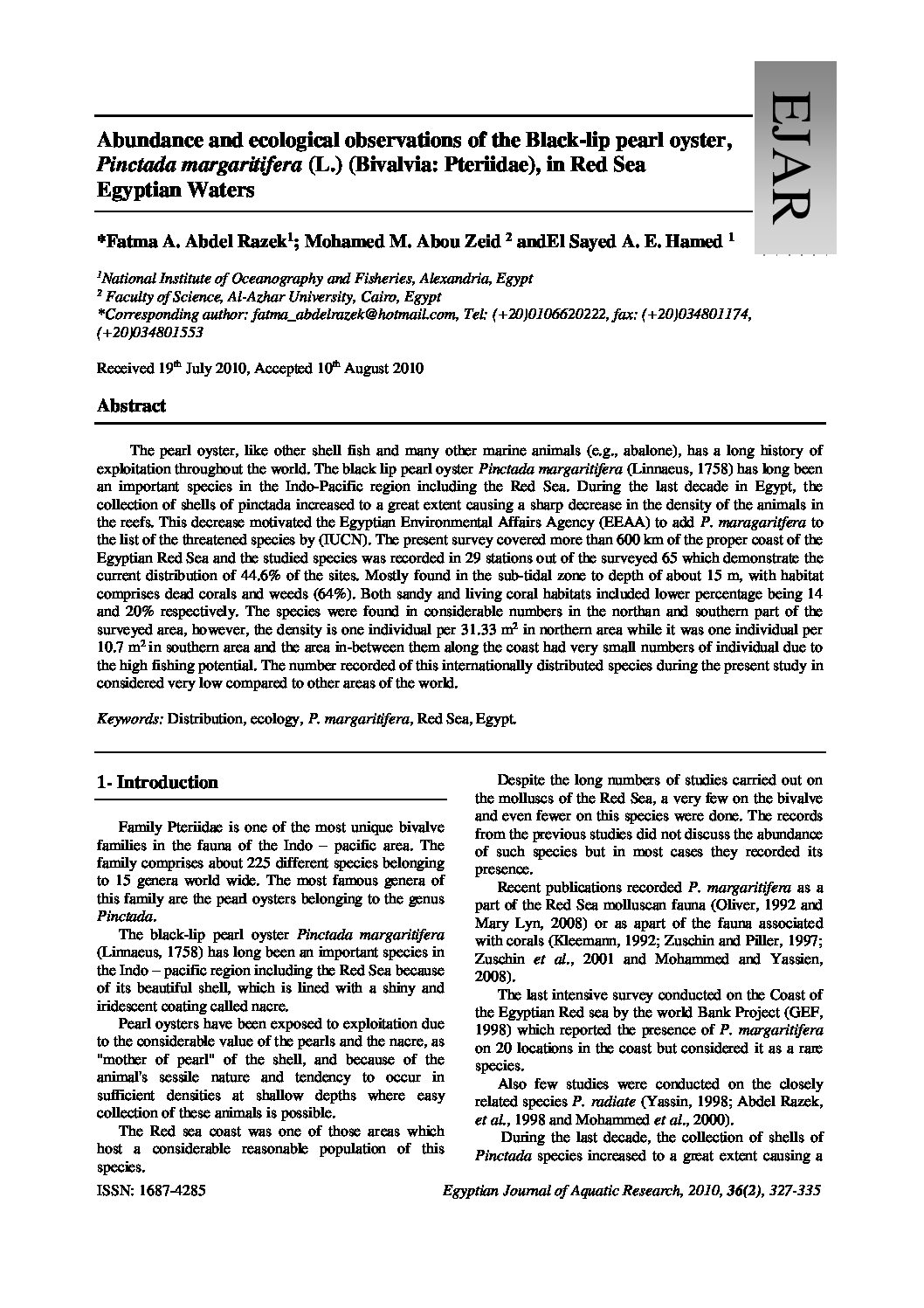Categories
vol-36Phytoplankton Community Structure at Some Sites of Marine
Origin Fish Fry collection, with special reference to Mugilidae
along Mediterranean Coast, Egypt
Zeinab M. El-Sherif and Nabila R. Hussein
National Institute of Oceanography and Fisheries, Environmental division, Hydrobiology laboratory, Alexandria,
Egypt.
Corresponding Author: Prof.Dr. Zeinab M. El-Sherif, Environmental division, Hydrobiology laboratory, National
Institute of Oceanography and Fisheries, Alexandria, Egypt.
E-Mail: [email protected], el [email protected]
Received 10th January 2010, Accepted 11th March 2010
Abstract
Phytoplankton Samples were collected from six sites along Mediterranean Coast of Egypt from Alexandria to
Damietta during, 2005, besides January and February, 2006 (the period of marine origin fish fry collection). A total
of 209 phytoplankton taxa were recorded; 96 Bacillariophyceae, 28 Dinophyceae, 28 Cyanobacteria, 7
Euglenophyceae, 49 Chlorophyceae and one species of silicoflagellates. The main phytoplankton groups were
characterized by Bacillariophyceae and Chlorophyceae (64.63% and 28.13% to the total community, respectively).
Kassara (West of Damietta) ,El-Meadyia and Rosetta sites showed increase in phytoplankton abundance( 848.3×103
,
539.9×103
and 329.2x103unit.l-1 respectively ) which associated by the increasing production of marine fish fry,
particularly Mugilidae (Mugil cephalus and Mugil capito),which reached 14.2×106
,566×103 and 1.1×106
fry.year-1
respectively. At Kassara site, fish fry production was positively correlated with pH, ammonia and nitrate, while at
El- Meadyia site fish fry of M.cephalus was negatively correlated with pH, and at Rosetta site, fish fry of M.capito
was positively correlated with number of phytoplankton species and species diversity, and fish fry production M.
cephalus was negatively correlated with salinity and total phytoplankton counts. While Soffara (east of Damietta)
site showed low phytoplankton counts (98.5×103 unit.l-1) and high production of fish fry (13.4×106
fry.year-1
), total
phytoplankton was positively correlated with pH value, and fish fry production was negatively correlated with
ammonia. The lower phytoplankton counts recorded at K21 and El-Mex sites(66.7×103
and 206.4 x103unit.1-
1
,respectively), coincided with low production of marine fish fry at K21 (485×103
fry.year-1
) and moderately value
of fish fry production at El-Mex site (770×103
fry.year-1
). At K21 site fish fry of M.capito was negatively correlated
with salinity and DO, while phytoplankton count was positively correlated with salinity during the period of
M.cephalus fish fry collection, at El-Mex site phytoplankton count was negatively correlated with DO.
Phytoplankton species diversity ranged between 0.52 nats (El-Meadyia, January, 2006) and 3.47 nats (K21,
March). The Similarity matrix showed that, all stations grouped with species similarity level (47.32 – 85.36%)
during winter, (49 – 90%) during autumn and (47.43 – 87.07%) during summer.
Keywords: Phytoplankton, diversity, similarity, fish fry, mugilidae, Mediterranean Coast.







